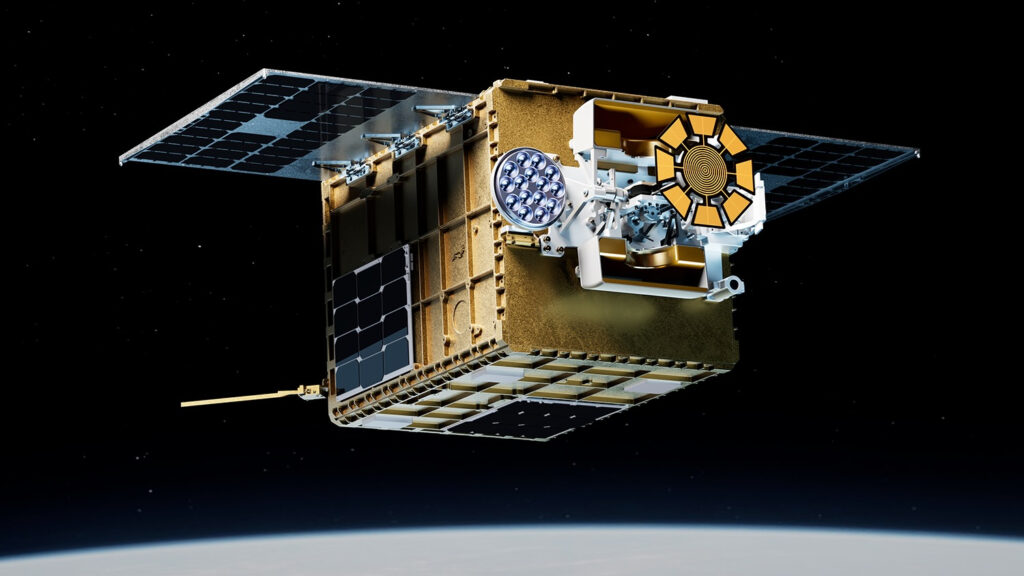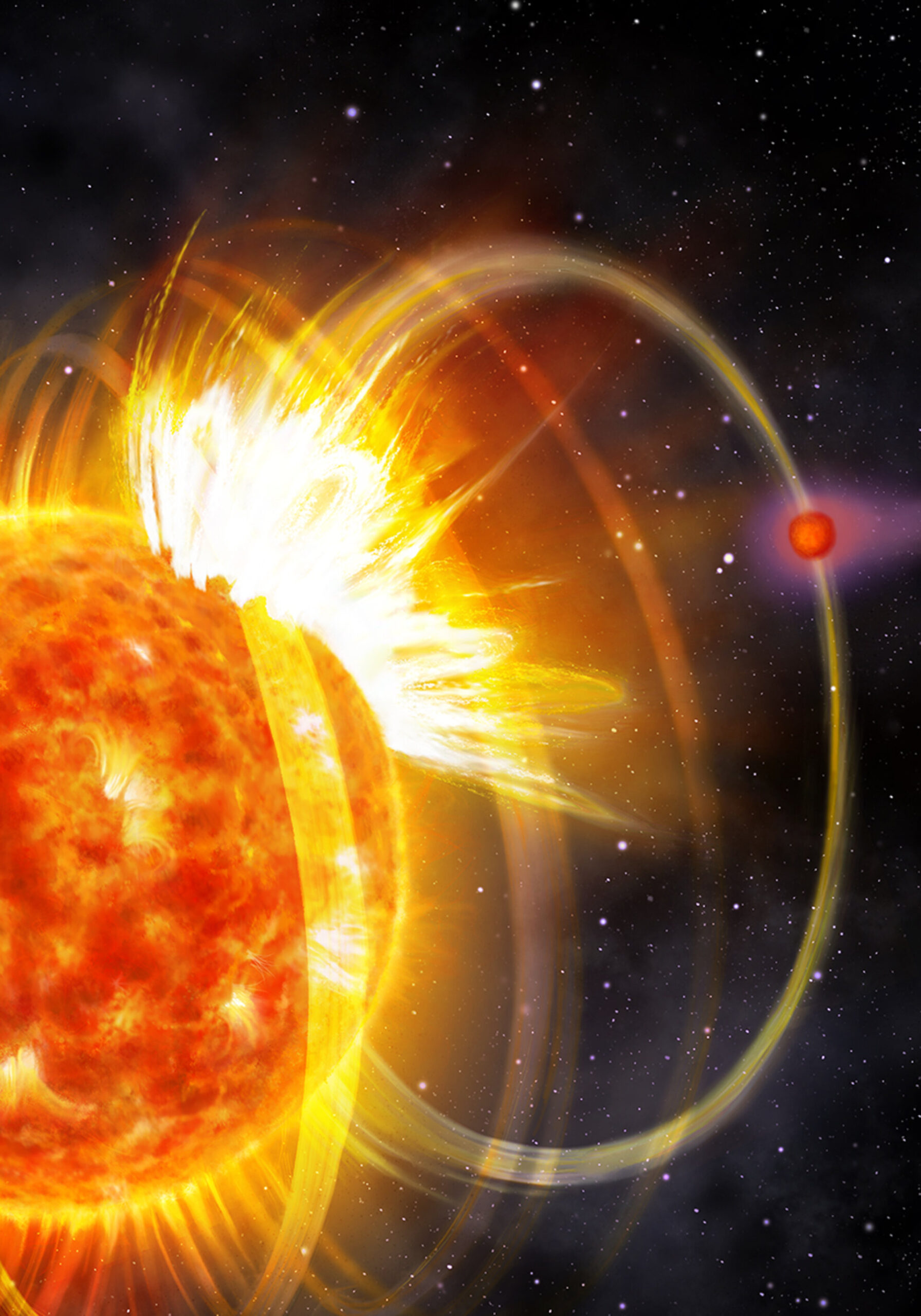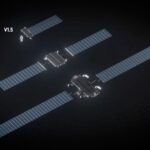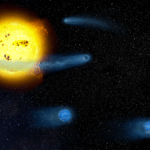Now Reading: Dust devils on Mars may spark lightning — possibly threatening NASA’s Perseverance rover
-
01
Dust devils on Mars may spark lightning — possibly threatening NASA’s Perseverance rover
Dust devils on Mars may spark lightning — possibly threatening NASA’s Perseverance rover
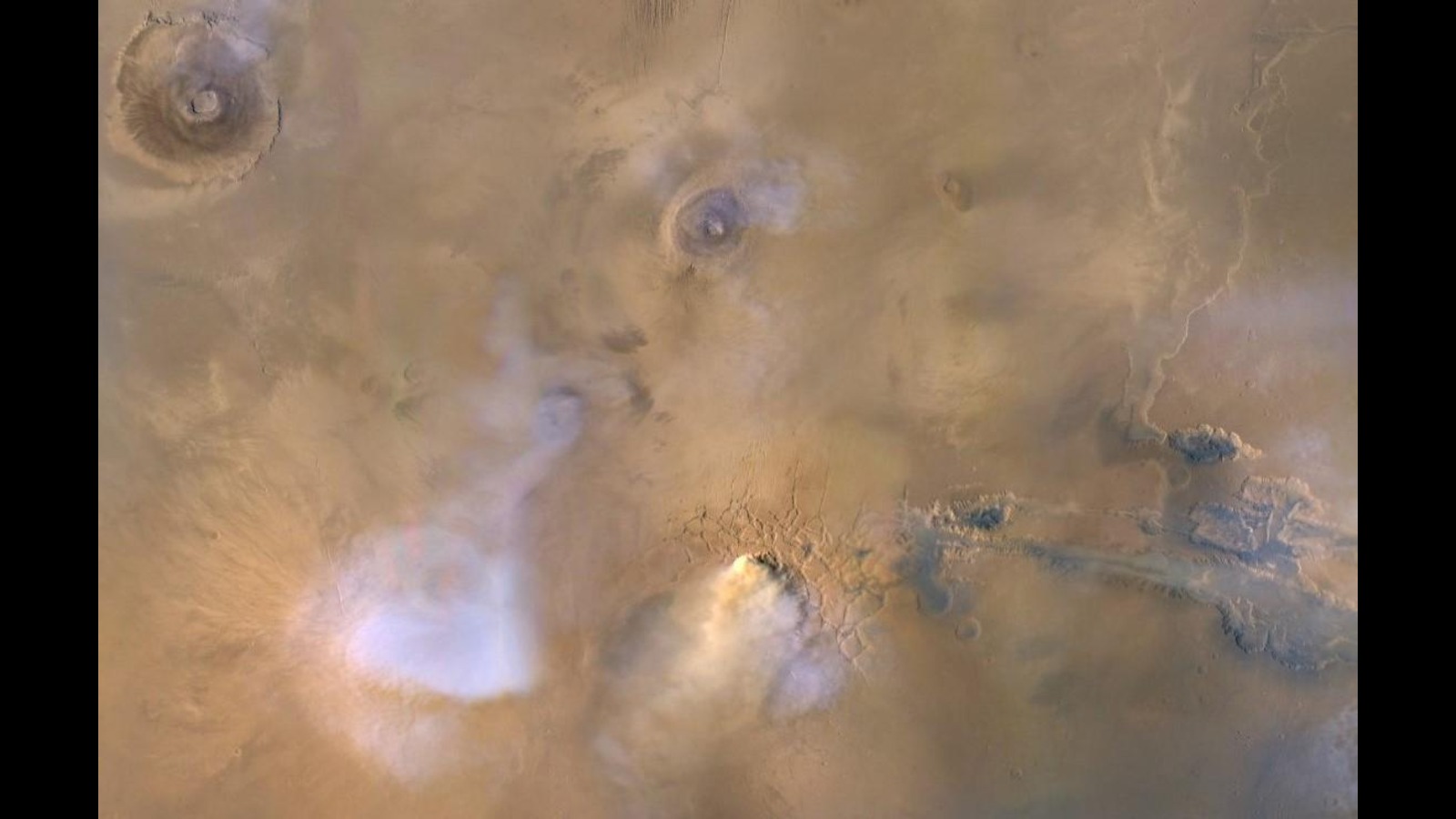
Dust devils on Mars could be crackling with electric currents, according to a new study — and scientists are a little concerned about this because a buildup of such charge could harm rovers rolling along the surface of Mars.
“Electrified dust will adhere to conducting surfaces such as wheels, solar panels and antennas. This may diminish the availability of solar energy, harm communications and complicate the motion of rovers and robots,” Yoav Yair, a professor at Reichman University in Israel who studies planetary lightning and was not part of the new study, told Space.com.
The study, led by Varun Sheel, head of the Planetary Science Division at the Physical Research Laboratory in India, uses computer models to show how charges could be distributed inside a Martian dust devil. But before getting to how charge buildup works within Red Planet dust devils, it is key to understand how dust devils form on Mars to begin with.
As the sun heats the Martian surface, air near the surface gets heated. Hot air is lighter than cool air, and so it tends to rise. Pockets of hot air therefore rise through cold air, rapidly forming an upward current. The sudden uprush causes air to speed horizontally inward to the center of a newly forming vortex. If the conditions are right, the vortex completes formation and starts spinning. As the air continues to rise, the vortex gets stretched vertically — sort of like a noodle — making the vortex spin even more quickly. As the vortex picks up speed, the wind swirls and kicks up dust. This creates a dust devil.
In short, dust devils are like little gusts of dust high on adrenaline.
Dust devils are frequent on the dry and dusty Martian surface. Mars has lower gravity and a thinner atmosphere compared to Earth. This allows the wind there to kick up dust higher than wind on Earth can. As a result, Martian dust devils can be thrice as large as their terrestrial analogues. NASA’s Viking was the first spacecraft to report dust devils on Mars. Later, Mars rovers like Curiosity and Perseverance captured dust devils zooming across the desolate Martian landscape. In general, such whirlwinds can pose a threat to landers and rovers — however, some rovers have actually benefited from dust devils. In 2005, a benevolent dust devil blew dust off the Spirit rover’s solar panels, increasing its power levels. Dust devils on Mars, indeed, are a fascinating and curious phenomenon.
And deepening the intrigue, the new study suggests lightning could be zapping inside these dust devils on Mars.
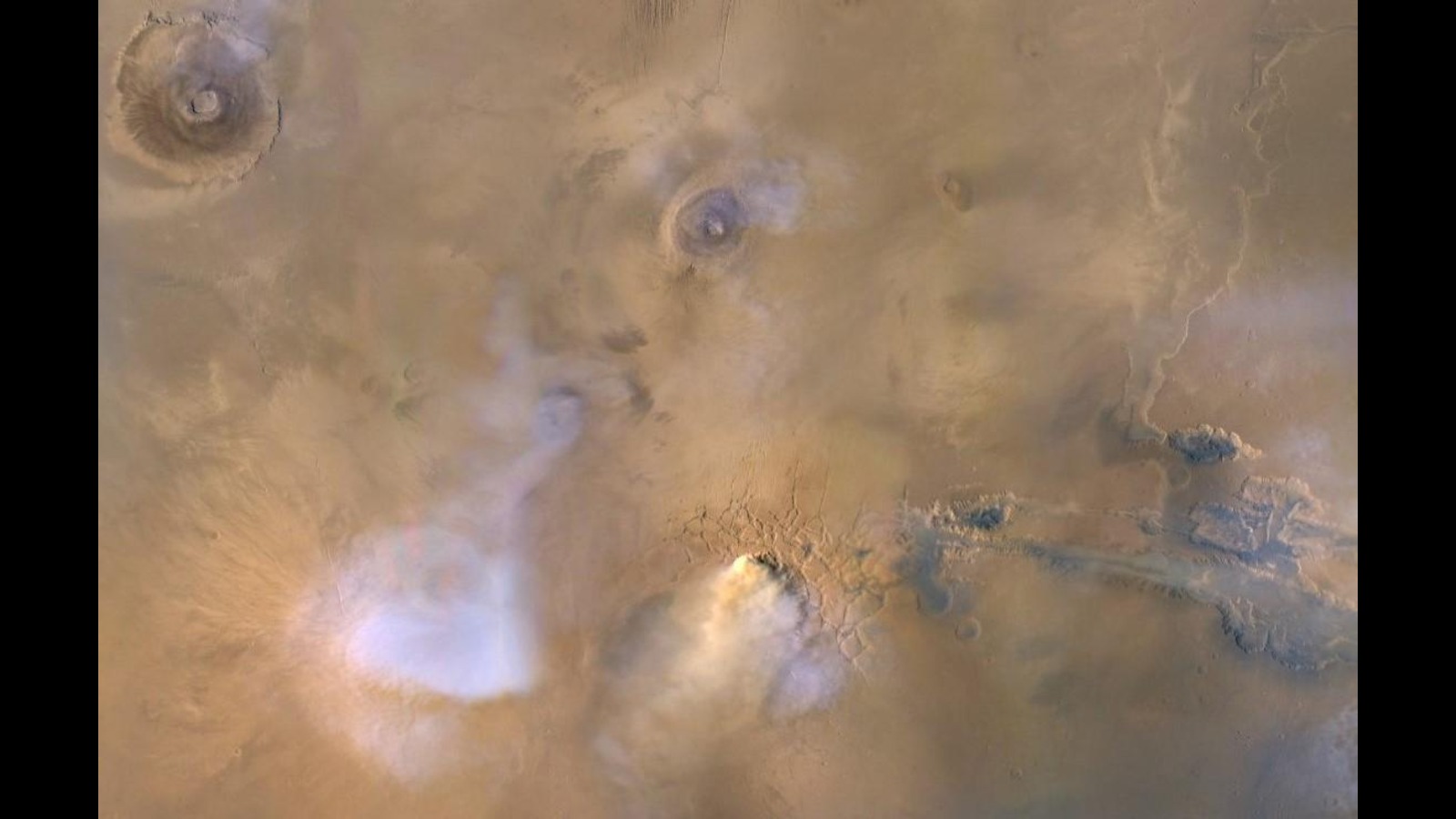
The most common form of lightning on Earth is the one seen during a thunderstorm. As water and ice churn violently inside a thundercloud, they generate electrical charges due to friction. Once that happens, the atmosphere around the clouds doesn’t let these charges flow through easily. This means the charges have nowhere to go and keep building up. At some point, the charges can’t hold anymore — and they snap. The charges crack through the atmosphere in the form of an electrically conductive conduit, which we see as lightning.
Interestingly, the new study’s team explains, a similar kind of churning happens inside dust devils on both Earth and Mars. In the case of dust devils rather than clouds, however, it’s the dust particles that are getting churned instead of ice and water droplets. Again, friction builds up charges, and when the charges can’t hold any more, the charges release in the form of lightning.
To be clear, the formation of a strong electric field precedes lightning and no direct observations of electric fields within dust devils on Mars have been found thus far. Instead, the study uses computer models to estimate the possible electric field strength and distribution within a Martian dust devil. This is, in fact, the first study to consider the size distribution of dust particles.
Sheel and his team found that when the atmosphere of Mars is laden with dust, the atmosphere becomes less conductive, prohibiting the flow of charges. This could cause a massive charge buildup in a dust-filled vortex, triggering lightning, he explains.
“The possibility that one day we can discover lightning [in these dust devils] is the most exciting aspect of the results,” Sheel toldSpace.com.
In terms of distribution, the study found that larger, positively-charged particles would settle at the bottom of the dust devil while lighter, negatively-charged ones would rise upward. The team also found that larger dust particles would increase the possibility of lightning.
“[The paper] adds an original level of complexity by discussing size distributions,” Yair said. “This is an important addition to the existing literature, with practical implications.”
However, regarding the possibility of dust devils generating lightning, Yair says, “I am surprised that the authors discuss the probability of lightning inside the dust devil while neglecting the fact that highly charged dust may discharge at much lower electric fields … negating the possibility of lightning.”
“In the end, predictions about lightning are very difficult because we don’t fully understand how particles charge each other, not even really on Earth. … Ultimately, I think the question will be settled only [by] direct observations on Mars,” Steven Desch, a professor of astrophysics at Arizona State University, who was also not involved in the study, toldSpace.com.
RELATED STORIES
Some progress may have happened on that front, too.
A recent study — shared by a group led by Baptiste Chide of the Institut de Recherche en Astrophysique et Planétologie, France at the European Geosciences Union General Assembly in Vienna in May — may have recorded the thunder from an electrical discharge. “Electrical discharges such as lightning are among the most energetic and remarkable phenomena in planetary atmospheres,” write the authors in their paper. They studied sounds recorded by the SuperCam microphone onboard the NASA Perseverance rover on Mars. The recordings showed signs of coming from an electric discharge in a dust devil. This is the first such direct detection on Mars, setting the stage for newer discoveries by upcoming Mars missions such as the European Space Agency’s Rosalind Franklin rover.
The study was published in the journal Physics of Plasmas in March.
Stay Informed With the Latest & Most Important News
-
 01From Polymerization-Enabled Folding and Assembly to Chemical Evolution: Key Processes for Emergence of Functional Polymers in the Origin of Life
01From Polymerization-Enabled Folding and Assembly to Chemical Evolution: Key Processes for Emergence of Functional Polymers in the Origin of Life -
 02Two Black Holes Observed Circling Each Other for the First Time
02Two Black Holes Observed Circling Each Other for the First Time -
 03How New NASA, India Earth Satellite NISAR Will See Earth
03How New NASA, India Earth Satellite NISAR Will See Earth -
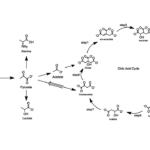 04Thermodynamic Constraints On The Citric Acid Cycle And Related Reactions In Ocean World Interiors
04Thermodynamic Constraints On The Citric Acid Cycle And Related Reactions In Ocean World Interiors -
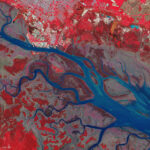 05Φsat-2 begins science phase for AI Earth images
05Φsat-2 begins science phase for AI Earth images -
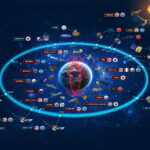 06Hurricane forecasters are losing 3 key satellites ahead of peak storm season − a meteorologist explains why it matters
06Hurricane forecasters are losing 3 key satellites ahead of peak storm season − a meteorologist explains why it matters -
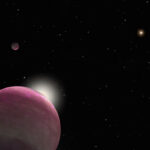 07Binary star systems are complex astronomical objects − a new AI approach could pin down their properties quickly
07Binary star systems are complex astronomical objects − a new AI approach could pin down their properties quickly














